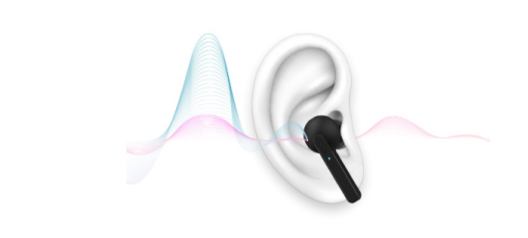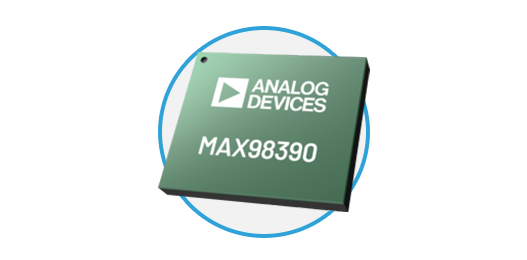
In today's consumer electronics market, miniature speakers are already used in a wide variety of devices, including gaming devices, smart home iot devices, and wearables. While private electronics that are turned up loud in public are often annoying, you will certainly prefer those that have a wider loudness range while ensuring fidelity at the time of purchase. How to improve the loudness and bass response of miniature speakers has become a major design consideration for many audio designers.
These tiny speakers are small in size, but their basic components - diaphragm, voice coil and magnet - are no different from traditional speakers. However, due to its smaller component volume and simpler structure, its overall shape is also more compact and thin. However, the small size of the miniature speakers also poses some challenges. Its volume (sound pressure level) and bass response are usually limited because the smaller the speaker, the higher the resonant frequency, resulting in bass attenuation and weak sound performance. However, by continuously monitoring and protecting the speaker from failure conditions, the volume and bass response of the speaker can be significantly improved.
In miniature speaker applications, the reliability challenges of the device have changed significantly compared to previous large speakers: the coil temperature of the miniature speaker can be as high as 100 degrees Celsius in a closed cell phone, for example, and the vibration amplitude of the diaphragm can reach the mechanical limit (beyond which the coil will collide with the magnetic circuit or the diaphragm will collide with the roof protective cover).
Standard amplifiers cannot monitor and protect speakers from these two conditions, so speaker power ratings are often set conservatively. The intelligent driver chip can calculate the impedance curve of the speaker through the real-time monitoring of the voltage and current of the speaker driver signal, and further deduce the resonant frequency, amplitude, and temperature rise of the speaker (or module), and these parameters will change dynamically due to the difference of the signal and the change of the environment.
Here, ADI's patented Dynamic Speaker Management (DSM™) technology can play a key role. DSM technology provides a safe way to drive miniature speakers beyond the specified maximum power rating. The DSM algorithm can increase the volume (sound pressure level) by up to 2.5 times and extend the bass response to up to two octaves at the resonant frequency, while achieving superior power efficiency.

Providing overshoot and overheat protection, the MAX98390 drives the speaker to its maximum limit
Today's consumer devices require speakers to fit into smaller space sizes, leading to an increasing number of applications using miniature speakers. The smaller the speaker, the lower the volume or sound pressure level (SPL), and the higher the resonant frequency, resulting in bass attenuation. By increasing the micro speaker drive to increase the volume and low frequency response, it is easy to cause overheating and vibration film swing too large, and damage the micro speaker.
The MAX98390 is a boosted digital DG-class DSM intelligent amplifier in a 6.3mm2 package that safely drives tiny speakers with typically low power ratings (up to about 3W) to higher power (up to 5.1W), fully unlocking the full audio potential of the system. At the same time, it can also be used with 5W speakers to further increase the volume and bass effect.

By employing integrated IV (current and voltage) detection technology and ADI's proprietary DSM algorithm, the MAX98390 can drive the speaker to its maximum limits and provide overshoot and overheat protection, easily addressing the above design challenges. The thermal protection features of DSM devices enable designers to safely and stably drive speakers, breaking through rated power limits and achieving maximum volume. DSM diaphragm protection enables the designer to drive the speaker to the limits specified by its diaphragm, breaking the lower limit of the resonant frequency and improving the low frequency response (two octaves).

To sum up, the MAX98390 brings several advantages to miniature speakers: more volume, heavy bass sound, up to 2.5 times more volume (sound pressure level) compared to traditional 5V amplifiers, low frequency range extended by 2 octaves, small size package; Ease of use, with ADI's new DSM Sound Studio software GUI, can quickly demonstrate system functions, so that designers can clearly hear the effects of DSM applications in a few minutes, easily feature analysis and prototype their own speakers, significantly reducing design time and workload; Industry-leading power consumption: Offering the lowest static power consumption on the market today, the boosted Class D amplifier has a peak efficiency of up to 86% and uses ADI's patented Perceptual Power Reduction (PPR) algorithm to increase power by an additional 25% without losing audio fidelity, with a minimum static power consumption of only 24mW, effectively extending battery life without compromising fidelity.
Quickly design intelligent amplifier solutions with the DSM Sound Studio GUI
In order to effectively protect the speaker, the amplifier algorithm must be based on a good understanding of the characteristics of the speaker, such as the resonant frequency, diaphragm swing limits, and voice coil thermal protection. Traditionally, designers have had to go through a time-consuming and complex feature analysis process or rely on vendor support to feature their speakers and their housings. Since most projects use different speakers during the prototype development phase, suppliers need to provide support for up to several weeks or require special equipment and expertise, further increasing the design challenge.
But with ADI's DSM Sound Studio GUI, the process has never been easier and faster, with the speaker's protection algorithms described and customized in less than 3 minutes. DSM Sound Studio is a GUI tool in the MAX98390 for speaker parameter extraction, tuning, and customizing DSM Settings. Another GUI is also available, the MAX98390C/D evaluation software, which can be used to change the configuration of the amplifier, such as boost voltage, current limit value, etc.
DSM Sound Studio supports fast presentation, ultra-fast characterization of speaker characteristics, tuning, and easy evaluation of different speakers and different tunes. DSM Sound Studio V2 delivers a better user experience by providing more detailed and relevant help, optimized parameter extraction, and richer stereo features to help with simple self-guided designs.
The MAX98390 helps customers quickly and easily feature a wide range of speakers through the easy-to-use DSM Sound Studio GUI, dramatically reducing design time. Combined with DSM's thermal protection, maximum volume is achieved within minutes over an ultra-wide frequency range without complex programming.
About US
Heisener Electronic is a famous international One Stop Purchasing Service Provider of Electronic Components. Based on the concept of Customer-orientation and Innovation, a good process control system, professional management team, advanced inventory management technology, we can provide one-stop electronic component supporting services that Heisener is the preferred partner for all the enterprises and research institutions.
